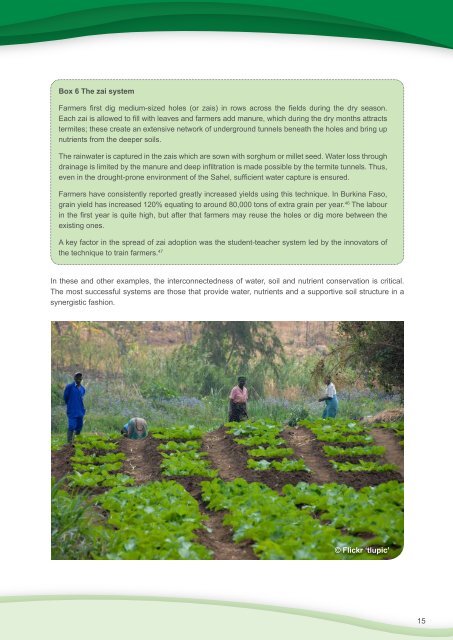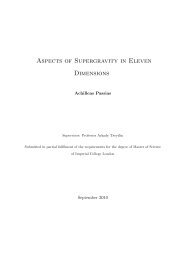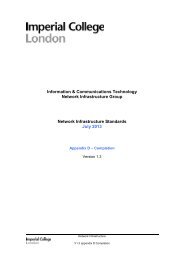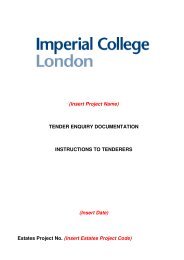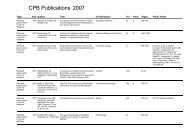Sustainable Intensification: - Workspace - Imperial College London
Sustainable Intensification: - Workspace - Imperial College London
Sustainable Intensification: - Workspace - Imperial College London
You also want an ePaper? Increase the reach of your titles
YUMPU automatically turns print PDFs into web optimized ePapers that Google loves.
Box 6 The zai system<br />
Farmers first dig medium-sized holes (or zais) in rows across the fields during the dry season.<br />
Each zai is allowed to fill with leaves and farmers add manure, which during the dry months attracts<br />
termites; these create an extensive network of underground tunnels beneath the holes and bring up<br />
nutrients from the deeper soils.<br />
The rainwater is captured in the zais which are sown with sorghum or millet seed. Water loss through<br />
drainage is limited by the manure and deep infiltration is made possible by the termite tunnels. Thus,<br />
even in the drought-prone environment of the Sahel, sufficient water capture is ensured.<br />
Farmers have consistently reported greatly increased yields using this technique. In Burkina Faso,<br />
grain yield has increased 120% equating to around 80,000 tons of extra grain per year. 46 The labour<br />
in the first year is quite high, but after that farmers may reuse the holes or dig more between the<br />
existing ones.<br />
A key factor in the spread of zai adoption was the student-teacher system led by the innovators of<br />
the technique to train farmers. 47<br />
In these and other examples, the interconnectedness of water, soil and nutrient conservation is critical.<br />
The most successful systems are those that provide water, nutrients and a supportive soil structure in a<br />
synergistic fashion.<br />
© Flickr ‘tlupic’<br />
15


